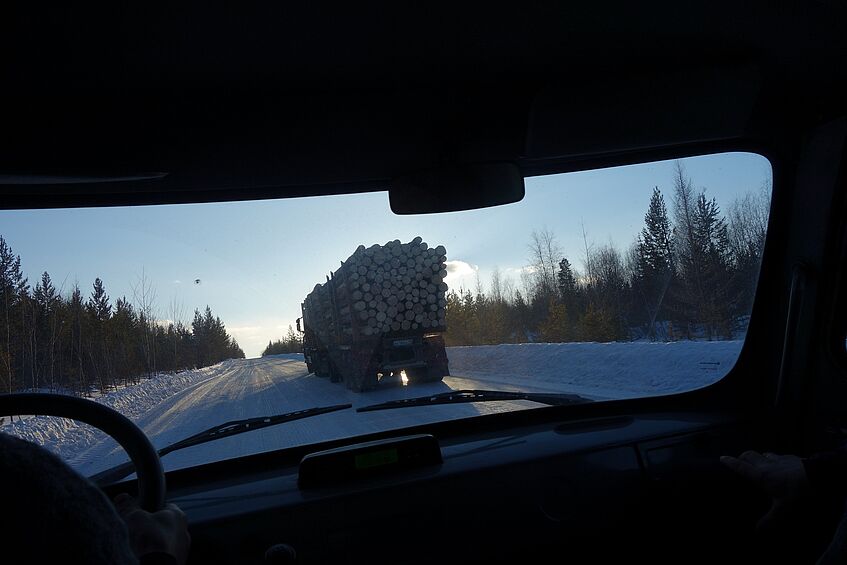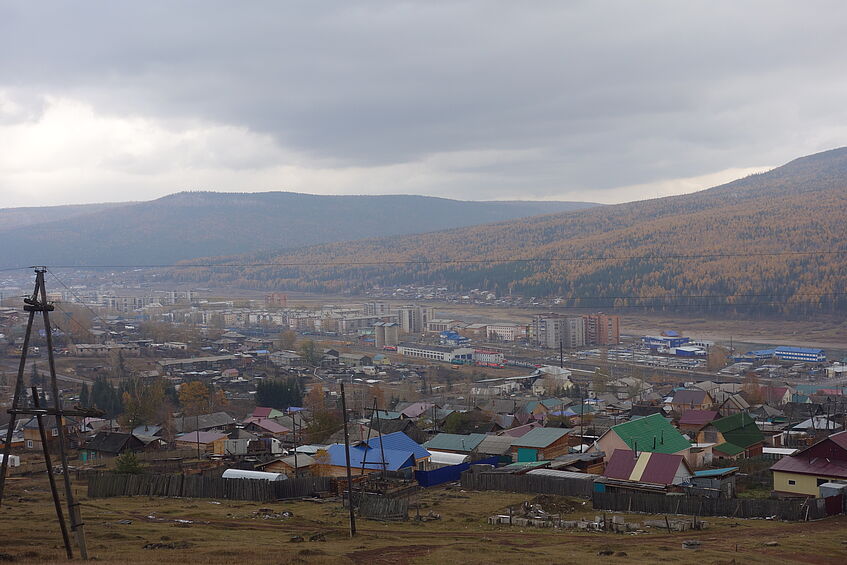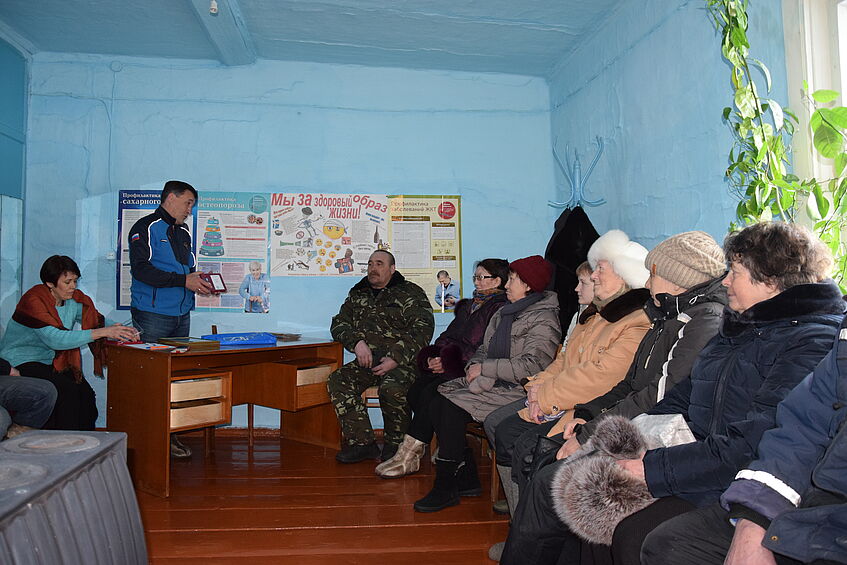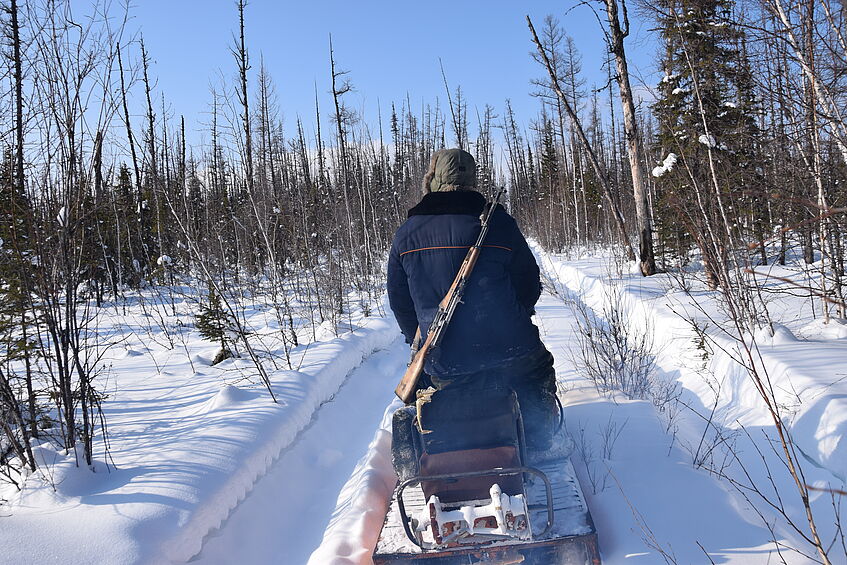Fieldwork Report. Tokma 2018
Tokma, a small village of sable hunters at the fringe of the zone of influence of the Baykal-Amur-Mainline (BAM) was again research site of Component B of the CoRe project in February and March 2018, after a first fieldtrip was carried out there in autumn 2016. As the research team comprising Gertraud Illmeier (University of Vienna) and Natalya Krasnoshtanova (Sochava Institute of Geography of Siberian branch of Russian Academy of Sciences) went there by helicopter in 2016, this time, the goal was to share people’s experience in reaching the village on the ground by travelling the winter road.

Tokma in winter
The goal of the second fieldtrip was to deepen research of conditions of mobility in a remote region and place that is neither directly connected to the BAM, nor permanently to any settlement as there are no permanent public roads. Travelling by car is possible only when the ground including rivers and swamps is deeply frozen to carry vehicles and when the winter road connecting Tokma with Verkhnemarkovo, an oil-settlement in 150 kilometres distance, has been installed. This is the case between end of December and March. Only recently, an alternative route to the village opened up along newly built corporate forest roads of the two main logging companies in the region.

Winter road
Verkhnemarkovo itself is of minor interest to the people living in Tokma, except for those, who have relatives there, but there, the winter road connects with a gravel road that is driveable all year round leading to Ust’-Kut, the most important town in the wider region, a transportation hub that links the more industrialised and populated southern part of Irkutsk Oblast’ with the remote northern territories of Eastern Siberia (Irkutsk Oblast’, Republic of Sakha (Yakutia)).

Ust'-Kut
How does this relate to the people living in a small community at the periphery such as Tokma that is cut off from the developments, businesses and opportunities of that town, which in linear distance is only some 200 km away? This was just one research question related to local mobilities directed outside of Tokma towards other settlements, we were interested in that. This part of fieldwork embraced travelling to Tokma from Ust’-Kut and back from Tokma to Novaya Igirma on corporate forest roads of different size and quality. This part was carried out by both research partners.
The other bundle of research questions asked for mobilities practiced in the local traditional economy – hunting, trapping, fishing and harvesting forest products such as berries and mushrooms. Here, a gender divide is in place, because hunting and trapping including stays of several weeks in the forest in winter, is practiced only by men.
In Tokma, fieldworkers gave a public presentation of the CoRe project and first insights based on the first fieldwork of 2016 in the library.

CoRe presentation
Tokma residents showed great interest in the project, because the issues at stake –mobility and transport, accessibility of the village, the extractive industry and its infrastructures and their impact on the local traditional mode of livelihood - have great significance and relate to practically every aspect of life of Tokma residents. They were also interested in why their community was chosen as field site and why Austrian researchers are interested in Eastern Siberia. The feedback of the local residents on the presentation was positive as they stated that they see their situation presented correctly. The presentation of CoRe increased people’s trust in the project.
Another remarkable event during fieldwork was the visit of the head of the district administration, Sergey Yurevich Chonsky, who holds this duty already for several years. The visit by the „начальство“, the highest authority in the district, of the southern, far away settlements of large Katangskiy district (139,000 km2 in total) is announced annually, but takes place in practice only every few years. Tokma, is more than 500 km away from the district centre Erbogachen. Thus, the visit was interesting from the perspective of our research topic as it provided new insights into the challenges of overcoming large (and smaller) distances in a northern region not covered by a tight transportation network.

Chonsky's visit
The part of fieldwork that focused on mobilities of the local hunters and included two trips with local hunters to their hunting grounds was conducted by Gertraud Illmeier. Accompanying the hunters, checking the trap lines and spending a few days in the taiga in hunting cabins, was a great – and for a woman a rare - opportunity to examine movement practices of the Eastern Siberian hunting and trapping economy.

Hunter
The last week of fieldwork was spent in the State archive of Irkutsk Oblast’ (GAIO) to search historical documents on the topic development of transportation infrastructure and mobility practices of the local population in southern Katangsky district in the 20th century. Some 110 pages were copied or photographed for analyses.
Regarding methods applied during this fieldwork, participant observation and interviewing were the central methods used in the field. Narrative open, semi-structured and expert interviews were conducted.
Topographical maps were used during interviewing for two reasons: with the intention to stimulate conversation on the topic and to get a better understanding of the space, in which the local population moves and dwells. Several times, in these situations, local informants drew sketch maps.



